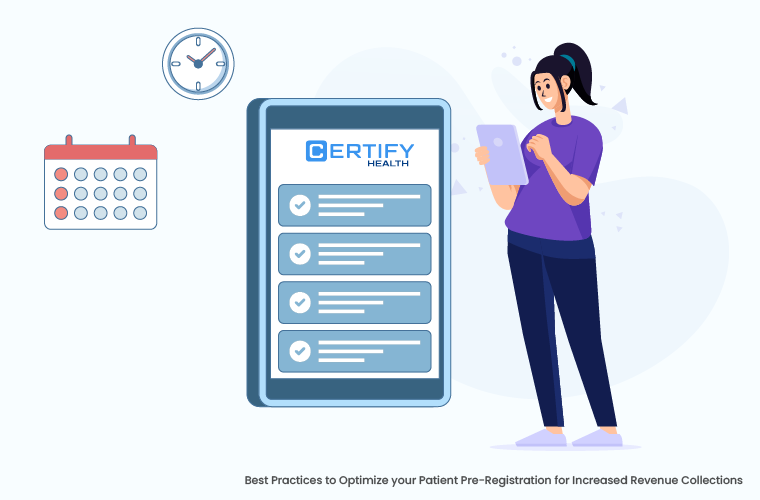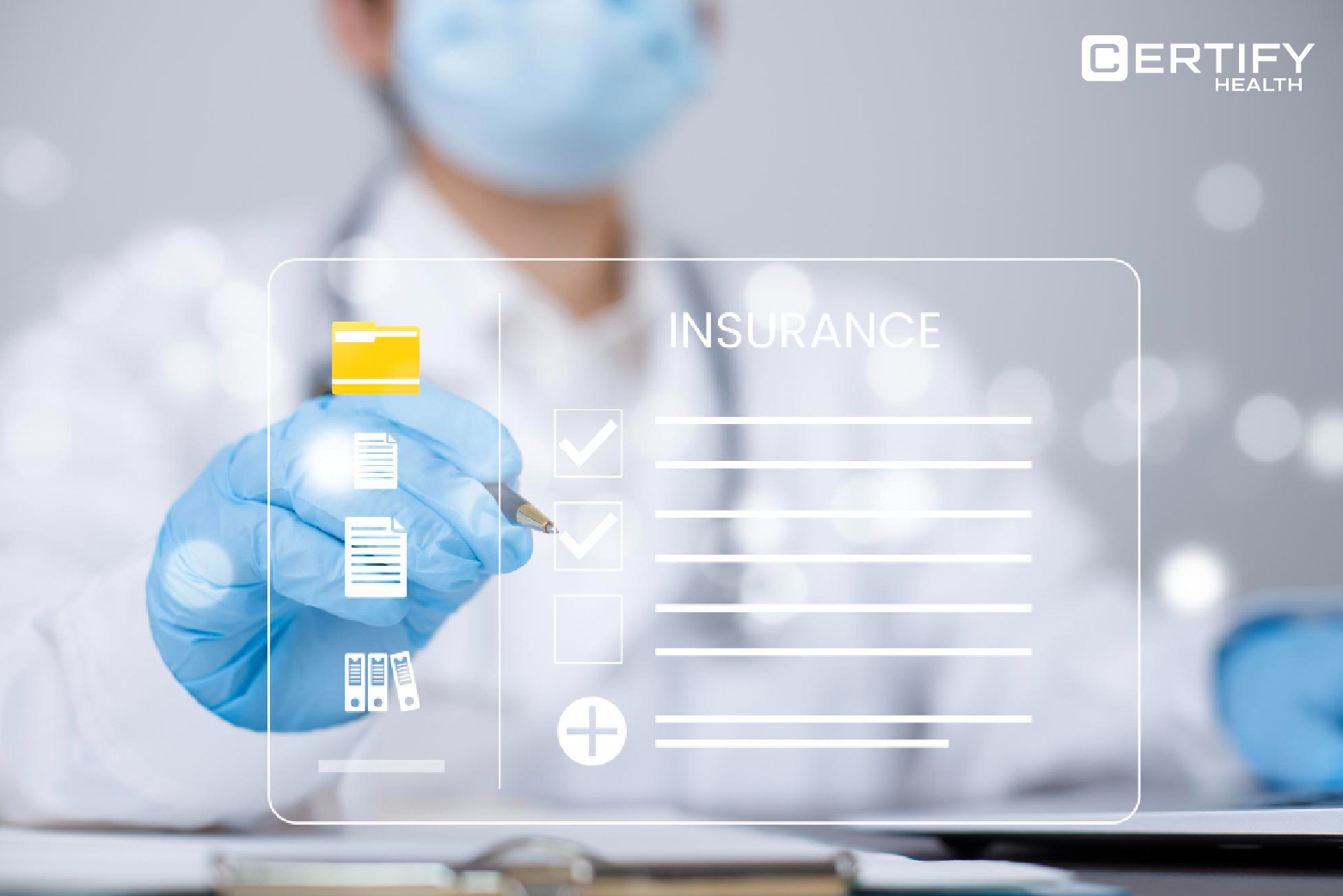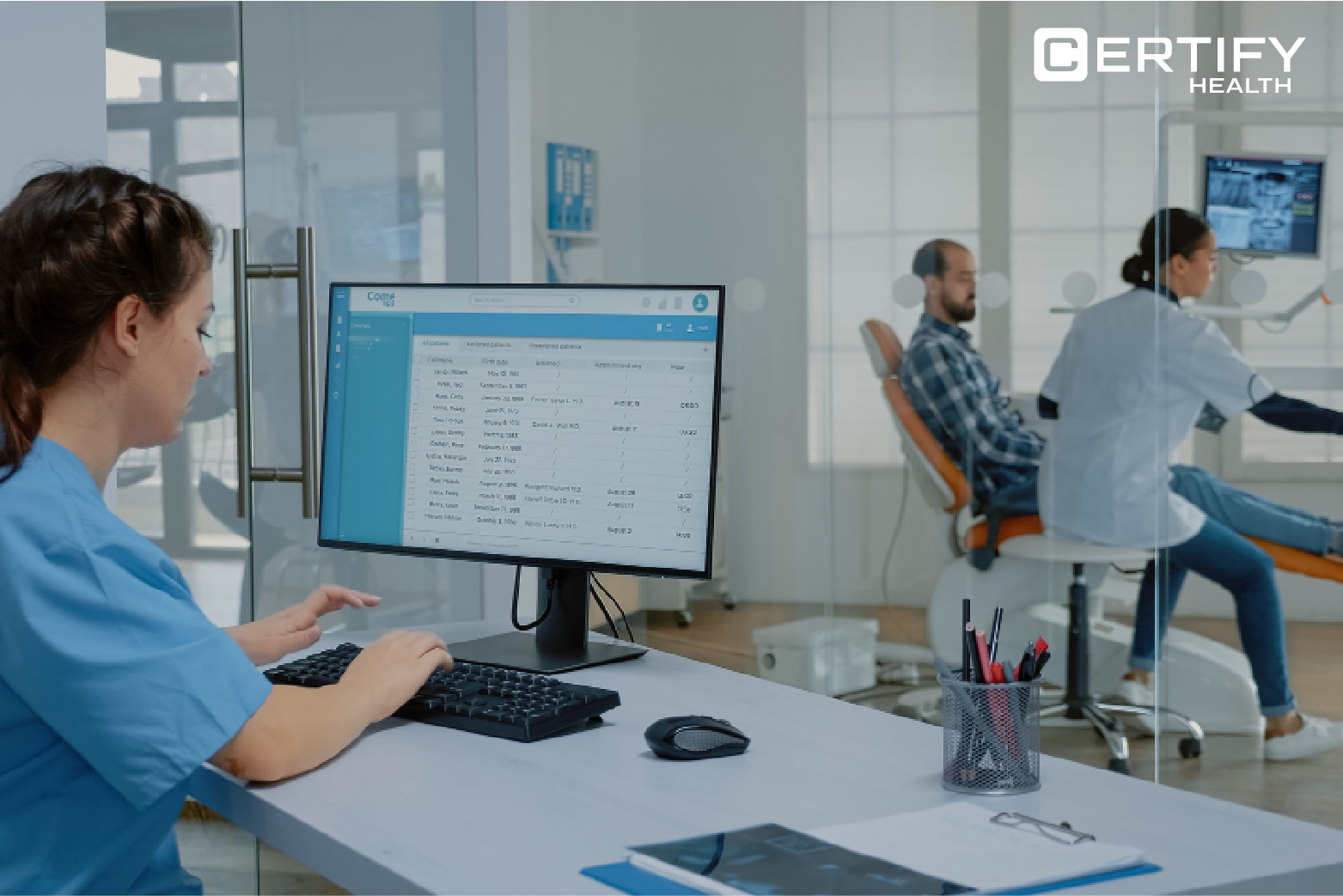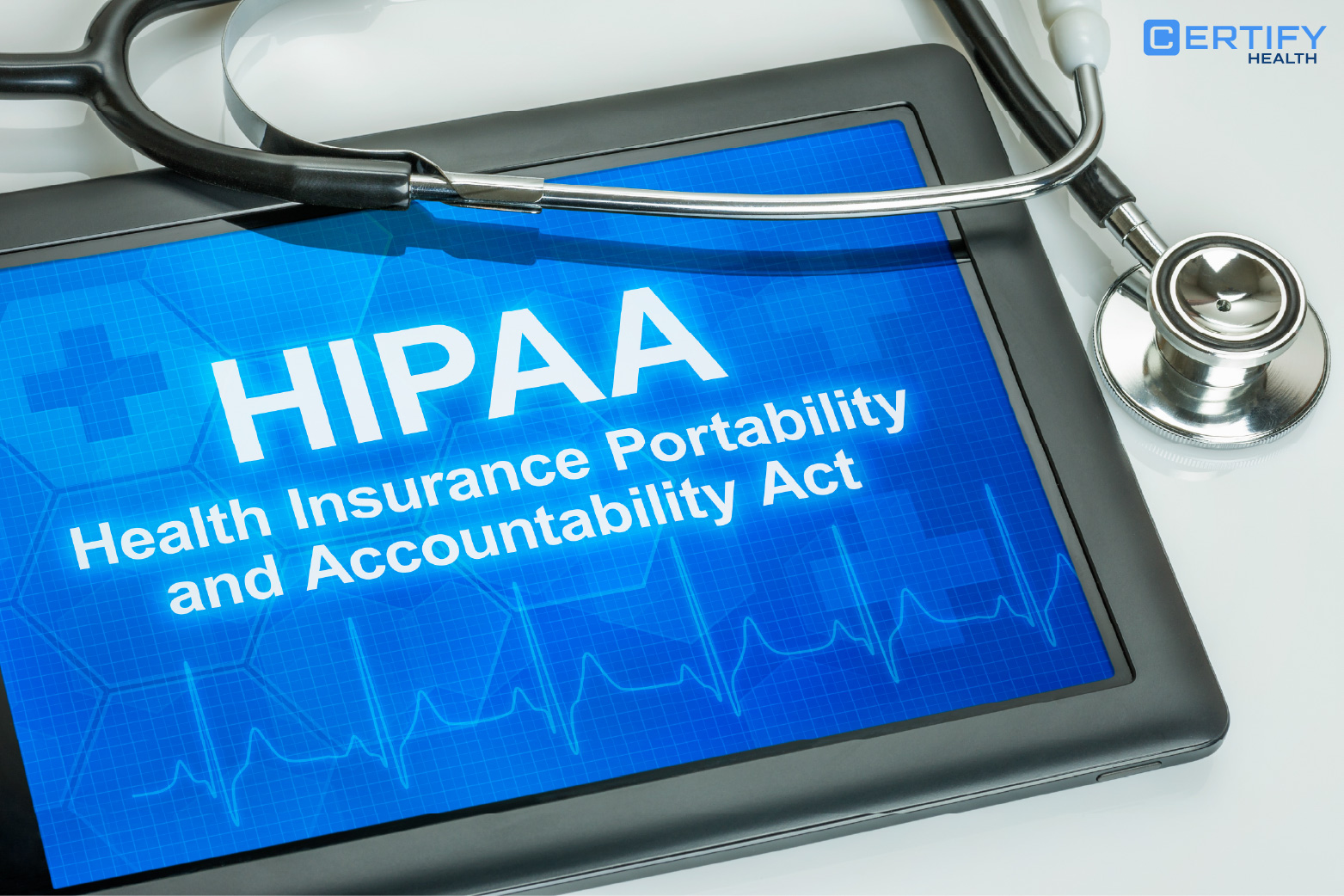This article serves as an informational guide to help healthcare providers optimize their patient pre-registration process. By exploring key strategies and best practices, you can improve registration accuracy, reduce claim denials, and ultimately enhance revenue collections.
Optimizing patient registration is one such crucial step in the whole journey to making your care setting a more efficient entity. An effective patient registration process helps your practice to minimize claim denials and handle bad debts. While claim denials can arise at various points in the revenue cycle, practices should concentrate on patient registration and eligibility stages.
In fact, according to the MGMA, 69% of healthcare organizations saw a 17% increase in claim denials in 2021, totaling around 48 million denied claims. Patient registration errors remain one of the leading causes of these denials.
Before diving into strategies to improve the registration process, let’s first clarify what patient registration entails.

What Is Patient Registration?
- Demographic Information – Age, gender, and other basic personal data.
- Contact Information – Patient phone numbers, email, and mailing address.
- Scheduling Details – Preferred dates, times, and specific provider requests.
- Health History – Relevant medical background, such as past diagnoses and treatment.
- Insurance Coverage Information – Details on the patient’s health insurance plan and coverage.

The Solution: Digital Patient Pre-registration
Digital Pre-registration has emerged as a game-changing solution for healthcare practices to create exceptional patient experience. A digital pre-registration process eliminates the need for manual entry, reduces errors, improves insurance verification and claims submission, and streamlines the payment collection process.
Doing so enhances your practice’s reputation, patient retention, and referrals by increasing the Patient Satisfaction Score (PSS). Leverage a digital solution like CERTIFY Health’s patient intake platform. This platform allows you to easily collect pre-registration and patient intake details prior to a patient visit, ensuring smooth verification and upfront billing. It also helps make check-ins smoother by reducing wait times, quick billing, and timely care delivery.
Did you know?
Digital pre-registration can reduce check-in times by 50%, which reduces front desk workload and is particularly helpful during personnel shortages, according to an MGMA research. Additionally, it lowers data entry errors, guaranteeing correct billing and more efficient administrative procedures.
Patient Satisfaction Scores (PSS), a gauge of patients’ general experience with medical services, therefore, rise noticeably in hospitals that use digital pre-registration. Patients feel more valued when they have faster access to care and spend less time on paperwork, which increases their level of involvement and happiness.
5 Strategies to Improve Patient Pre-Registration Process
Enhance Efficiency with Digital Patient Portals
Implementing digital patient intake or patient portals is the first step to streamline the patient pre-registration process. CERTIFY Health’s digital patient intake platform enables patients to fill out their details through patient portals and schedule appointments for seamless walk-ins.
When using digital forms for pre-registration, the chances of getting errors is very low. This eliminates the need for paperwork, handwriting issues, and time-consuming manual entry.
Did you know Using patient portals can significantly reduce missed appointments and streamline the pre-registration process. In a study conducted from 2016 to 2018, 4,296 patients used patient portals, and 93% found it easy to navigate, while 51% reported it saved time for scheduling.
Portal users had a 53% lower no-show rate (4.5%) compared to non-users (9.5%), underscoring the portal’s role in improving attendance and efficiency in healthcare settings.
Key recommendations for an effective digital portal include:
- A simple, intuitive design for patients to easily navigate the portal
- Multi-factor authentication for secure access to safeguard patient data.
Key Takeaways:
- Enhanced Efficiency and Reduced Errors – Streamline registration by allowing patients to enter information directly, reducing errors that are common with manual data entry.
- Lower No-Show Rates – Studies show that healthcare providers who use digital patient pre-registrations have fewer no-show rates compared to non-users, improving operational efficiency.
Reduce Denials with Real-Time Insurance Verification
To ensure a patient’s insurance coverage and benefits, Eligibility & Benefits Verification (E&B) is crucial. This helps healthcare providers to understand the financial aspects of patients including cost of treatment, coverage limits, and out-of-pocket costs.
Practices integrating CERTIFY Health’s insurance verification platform can instantly check insurance eligibility and eliminate claim denials and promote your revenue collections. Real-time E&B verification minimizes financial discrepancies, optimizes revenue cycle management, and enables patients to address co-pays and deductibles early, avoiding large outstanding balances and bad debts.
Did you know? Verifying patient insurance eligibility before appointments can reduce claim denials by 20-30%, helping avoid revenue losses and building patient trust. This proactive step addresses common issues like incorrect insurance details or inactive coverage, preventing surprise bills and minimizing financial strain for patients and providers alike.
Key recommendations for implementing real-time E&B:
- Integrate real-time insurance eligibility verification eligibility verification into the patient registration process for instant checks, eliminating financial disputes.
- Standardize operating procedures for efficient, real-time E&B processing, ensuring faster responses, reduced manual errors, and clear patient communication on coverage details.
Key Takeaways:
- Prevent Revenue Loss and Build Trust – Real-time Eligibility & Benefits Verification (E&B) reduces claim denials, avoiding unexpected bills and enhancing patient trust.
- Optimize Financial Management – Integrating instant insurance checks helps practices manage patient costs, minimizing large balances and improving revenue cycles.
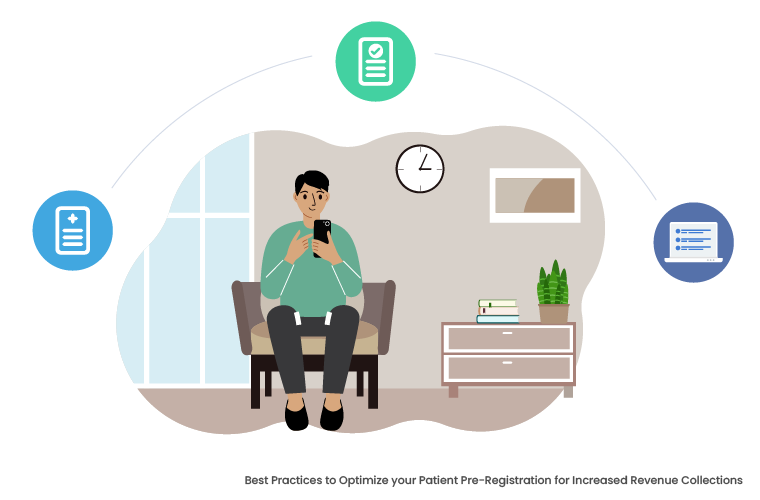
Optimize Patient Flow with Standardized Intake Forms
Patient Intake Forms are essential documentation of patient pre-registration to collect important patient data. These forms help in understanding patient’s medical history and getting insurance benefits details of the patients beforehand. Switching from paper-based forms to digital ones that patients can complete online or on a KIOSK/Tablet in the office saves time and minimizes the risk of losing important documents. Integrating these intake forms with your EHR system allows patient data to populate directly into their charts Did you know? Half of patients prefer completing intake forms at home, and 58% find paper forms “old fashioned.” This clearly depicts how digital forms improve both patient satisfaction and clinic efficiency!Key recommendations for implementing digital forms:
- Provides patients with e-consents and e-signatures for better experience, eliminating the hard costs of papers and scanners.
- Ensure that all forms are HIPAA compliant to eliminate data breaches, gaining your patient trust and loyalty
Key Takeaways:
- Save your staff time, reduce paperwork, and minimize errors by integrating directly with EHRs, leading to a smoother registration process.
- Mobile or kiosk-based intake forms provide patients with convenient pre-registration, avoiding outdated, paper-based methods.
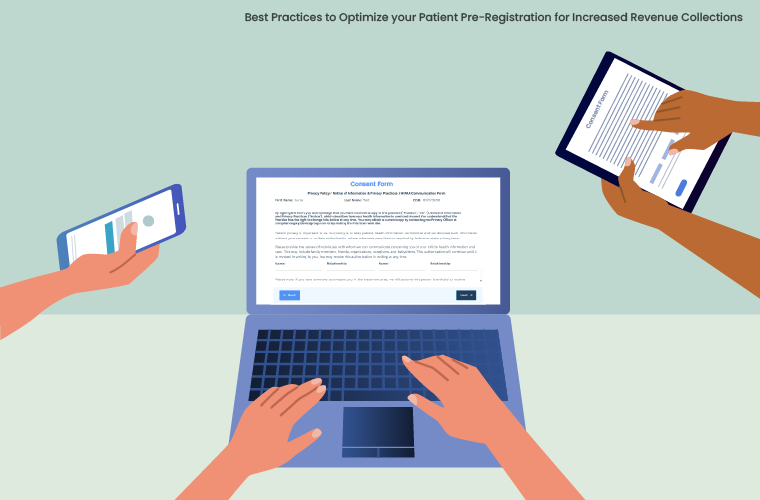
Simplify Onboarding with Mobile Patient Pre-registration
Offering mobile patient pre-registration solutions allows patients to complete essential registration steps anytime, from anywhere at their convenience. It reduces wait times, improves data accuracy, and creates a smoother onboarding experience for your patients, saving your staff time.
Helping your patients to handle their registration in advance through mobile pre-registration can streamline workflows and make visits more efficient and enjoyable. CERTIFY Health is one such platform that offers mobile patient pre-registration to ease the workflow of your practice.
Did you know? In a 2024 survey, 65% of providers reported that patients prefer digital and self-service pre-registration options through mobile phones for a seamless, patient-centered experience!
The recommendations are as follows:
- Create a User-Friendly Mobile Experience: Design intuitive, easy-to-navigate procedure for patient registration, ensuring a seamless experience across all devices.
- Prioritize Security with Strong Authentication: Use secure methods like two-factor authentication and encryption to protect patient data during mobile pre-registration.
Key Takeaways:
- Reduce wait times and enhance data accuracy, making the onboarding process more efficient for both patients and staff.
- Self-service digital solutions improve patient satisfaction by offering convenience and streamlining the registration experience.
Enhance Security with Biometric Identification
Biometric identification, such as fingerprint, palm or facial recognition, speed up the patient check-in process, enhancing positive patient identification (PPID).
Integrating this technology during pre-registration helps de-duplication of patient records, data accuracy for improved safety and operational flow.
Did you know? The adoption rate of biometric identification in healthcare is about 50–60%. As the industry moves toward more secure, seamless, and efficient ways to identify patients, biometric solutions, like fingerprint and facial recognition, are gaining traction to improve patient safety and reduce fraud risks.
Key recommendations for implementing biometric identification:
- Choose Reliable Biometric Methods: CERTIFY health’s biometric identification system offers accurate and secure biometric options like fingerprint or facial recognition for effective patient verification.
- Ensure Data Security: Implement strong encryption to protect biometric data during transmission and storage, safeguarding against unauthorized access.
Key Takeaways:
- Fingerprint and facial recognition methods streamline the check-in process and improve patient identification accuracy.
- Integrating biometric systems during pre-registration helps to reduce record duplication and enhance data accuracy, benefiting patient safety and operational efficiency.
The Bottom Line
In conclusion, optimizing your patient pre-registration process with digital portals, real-time insurance verification, mobile solutions, standardized intake forms, and biometric identification not only enhances operational efficiency but also reduces claim denials and improves revenue collections.
By streamlining workflows, minimizing errors, and ensuring a seamless, secure patient experience, healthcare practices can foster better patient engagement and financial outcomes. Embracing these best practices ensures smoother processes for both staff and patients, contributing to a more efficient and profitable practice.
Interested in learning more about modern healthcare practices and how you can streamline them?
Visit our website for articles and tools to help you optimize every step of the patient’s experience.


